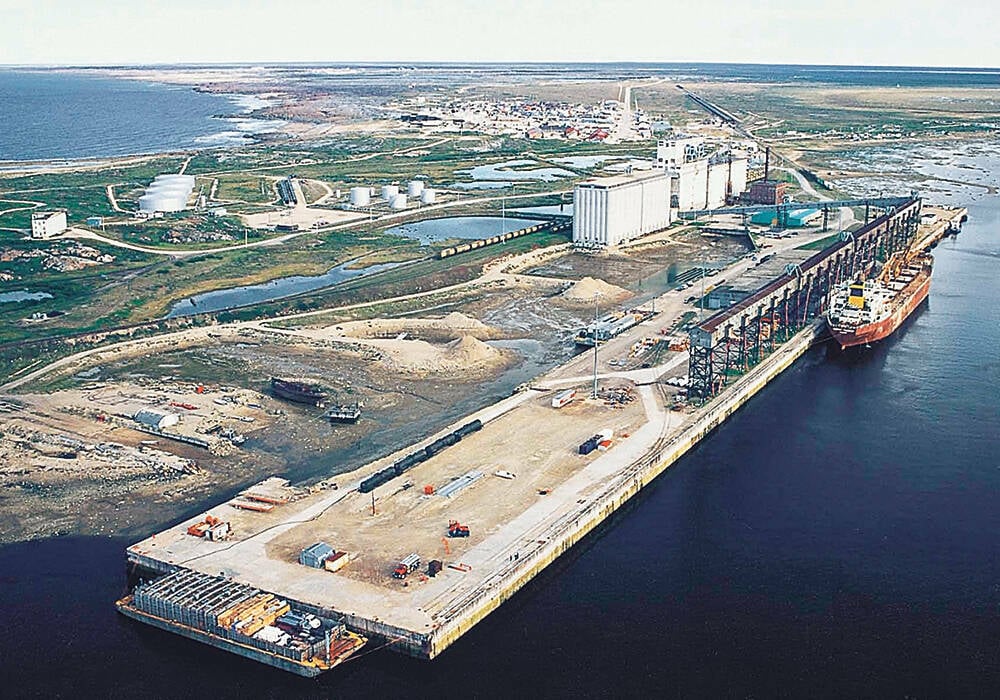This past January, the Government of Canada announced its “Team Canada” missions to the U.S., to promote Canadian exports in advance of the upcoming renegotiation of the Canada U.S. Mexico Agreement (CUSMA, the former NAFTA).
The missions are a good thing, but something is lacking. I have heard little mention of cross-border trade in agriculture and food products when “Team Canada” is discussed.
Our federal government talks about securing trade vital to national security, but for some reason agriculture and food seem not to be included in the national security bucket. This is despite the fact that agriculture and food are among our largest export sectors, accounting for about $60 billion in goods to the U.S. annually.
Read Also

Port of Churchill revamp gathers pace
Canada’s Port of Churchill Plus update plan hopes to expand trade, including agriculture trade, at Manitoba’s Arctic sea port
Canada is an exporting nation and Manitoba is an exporting province. For example, 90 per cent of the eight million pigs raised in Manitoba every year are exported, either as pork shipped globally or as live animals to the U.S.
The international agricultural landscape is witnessing a troubling trend toward protectionism, and these exports are at risk. Manitoba’s farmers and processors cannot afford market access restrictions and need our governments to aggressively fight for our interests.
In the U.S., our farmers are facing state level regulations that reach beyond the borders of individual states, like Proposition 12 in California. Extra-territorial legislation by individual states fractures the integrated North American market for agriculture and food products, increases the price for consumers and decreases the return for farmers.
There is also a new country of origin labelling law from the U.S. Department of Agriculture that will discriminate against Canadian pigs and cattle exported to the U.S. Again, this results in higher prices for consumers and lower returns for farmers.
Canada needs to be much more assertive in pushing back against these new trade barriers.
New barriers to cross-border agriculture and food trade are appearing against the backdrop of the upcoming renegotiation of CUSMA. Canadian agriculture will almost certainly be a target, no matter who wins the U.S. elections this November.
Canada needs to develop a comprehensive agriculture and food strategy as we approach these renegotiations. For starters, the sectors’ interests should be included in outreach to state and national legislators. Agriculture should be part of “Team Canada.”
Without a defined national strategy, developed in collaboration with farmers and processors, agricultural and food export interests may be overlooked, or even traded off, to protect other sectors when the CUSMA renegotiations take place.
Farmers have reason to be wary that their trade interests will not be of primary concern. When the Government of Canada announced a 100 per cent tariff on China-made electric vehicles and a 25 per cent duty on Chinese steel and aluminum, China quickly responded by initiating a dumping probe on canola exports.
It is hard to object to the government taking action to protect Canadian jobs from unfair trading practices, but farmers should not carry the costs if retaliatory measures are taken. The government has seen fit to offset the impact of trade agreements on other sectors of agriculture and the same consideration should be given if our exports become political targets. This needs to be part of the comprehensive agriculture and food trade strategy.
The Government of Manitoba also has a key role to play in protecting farmers’ market access. Premier Wab Kinew recently created the Business and Jobs Council, which undertook a trade mission to the U.S. this spring. This is a positive step.
However, our voice could be amplified, both in Washington and Ottawa, if there was a common agriculture trade strategy developed across the Prairies. Collaboration across Western Canada on agriculture and food trade should extend beyond the U.S. For example, it would be a breakthrough in collaborative government if Manitoba were to work with the other prairie governments to establish a presence in key Asia Pacific markets.
Farmers who rely on international markets face significant market access threats that will have substantial negative impacts on incomes, especially in western Canadian provinces, if we fail to act. There needs to be a concerted effort to develop a comprehensive agriculture and food trade strategy aimed at protecting the trade access we have today and breaking open new opportunities to offset protectionist threats.
Development of this strategy must include farmers and processors, and it should include collaboration across provincial governments as well as the Government of Canada.
Cam Dahl is the general manager of the Manitoba Pork Council.















